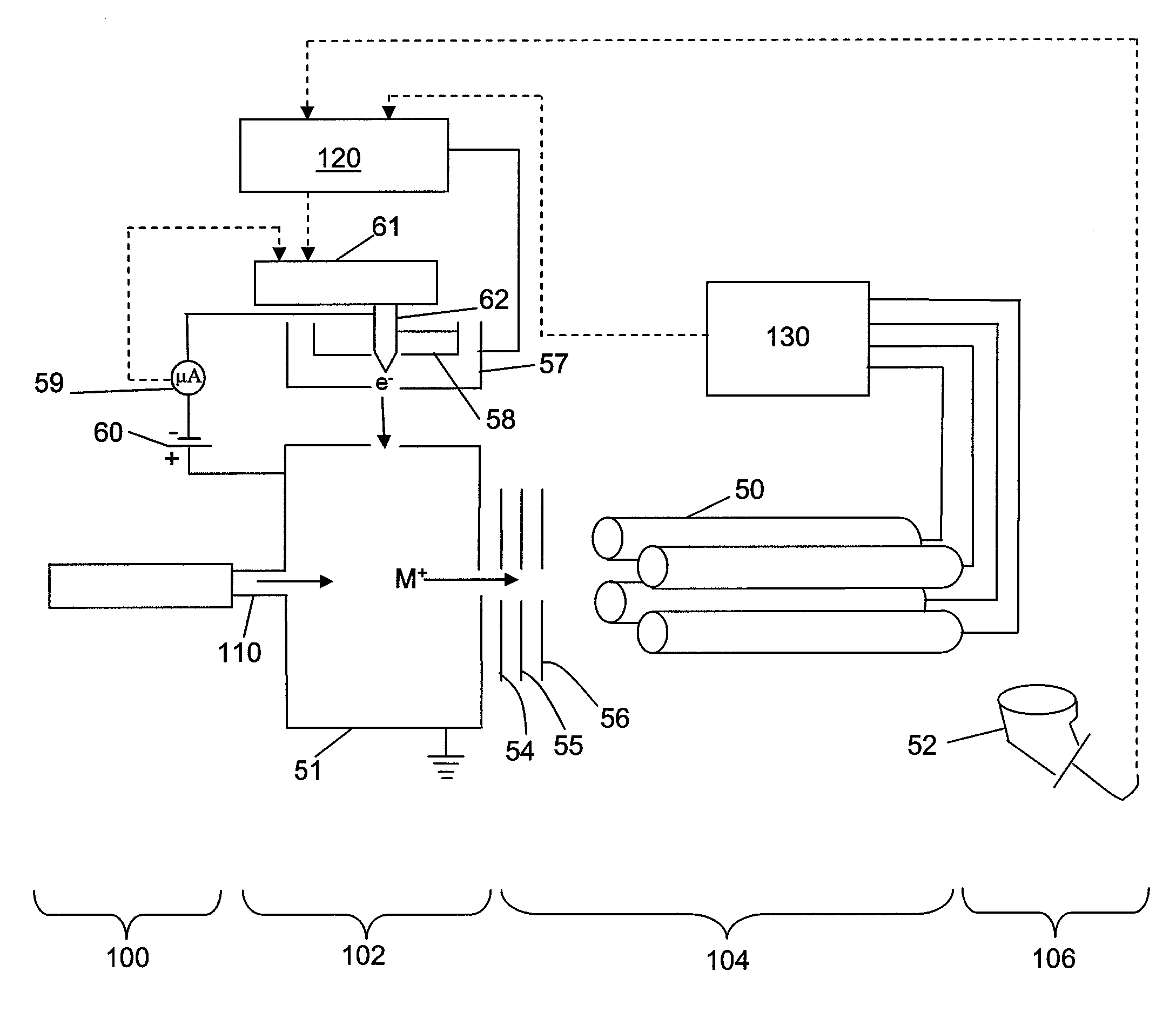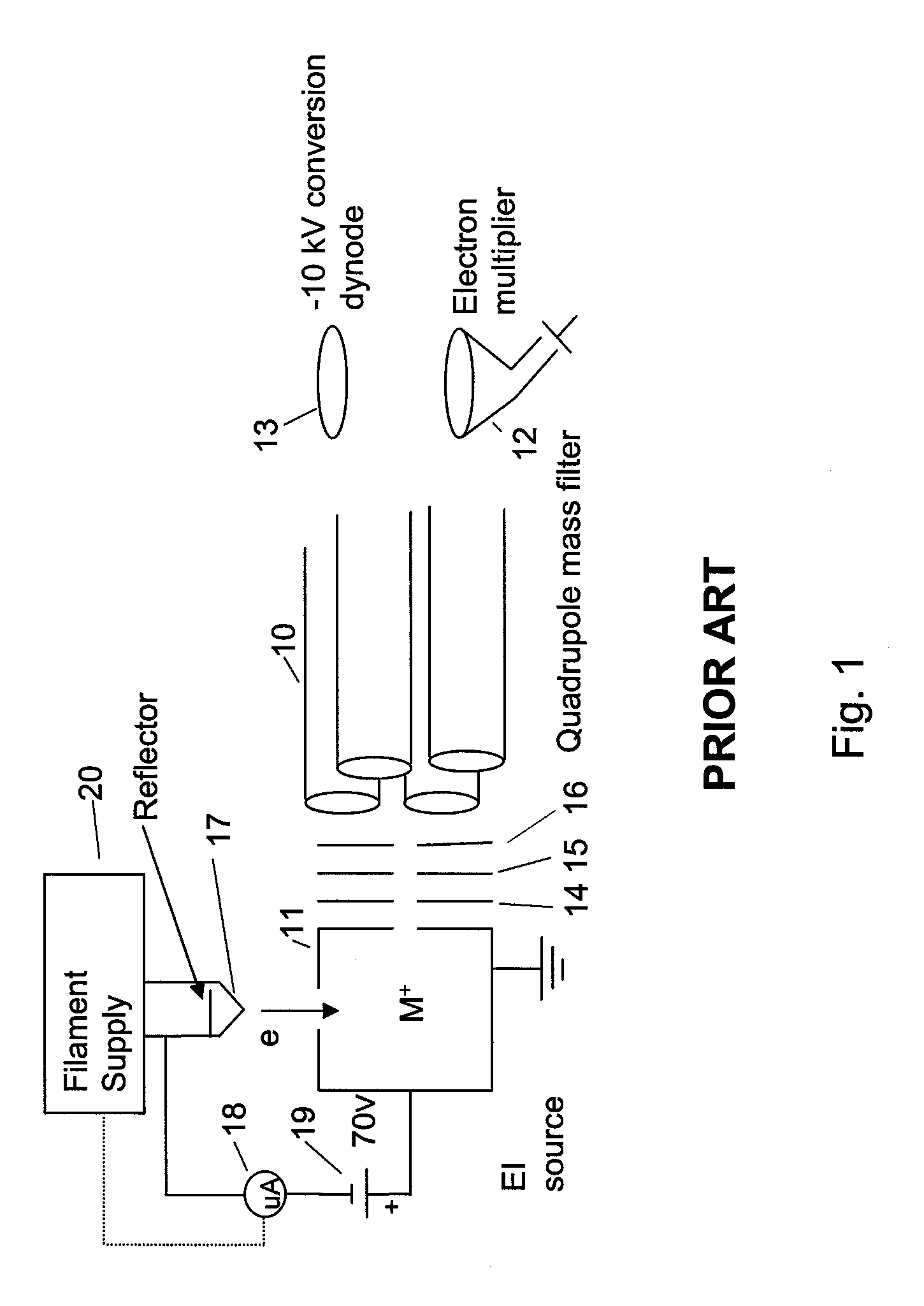Pulsed Ion Source for Quadrupole Mass Spectrometer and Method
a mass spectrometer and quadrupole technology, applied in the field of mass spectrometry methods and apparati, can solve the problems of source sensitivity loss and quadrupole contamination, premature electron multiplier failure, and suffer from imposing a reduced sensitivity for all components of interest, so as to improve the linear dynamic range and prolong the linear dynamic range of a continuous beam mass spectrometer. , the effect of preserving detection limits
- Summary
- Abstract
- Description
- Claims
- Application Information
AI Technical Summary
Benefits of technology
Problems solved by technology
Method used
Image
Examples
Embodiment Construction
[0043] Ions can be produced within an ion source through the interaction of energetic electrons with gas phase molecules or atoms in the electron ionization mode (EI) or by interaction with primary reagent gas ions in the chemical ionization mode (CI). The maximum number of ions produced is controlled by varying the duty cycle of an electron beam. The control can be based on a previous mass resolved scan, non mass resolved pre-scan or in real time during the detection of discrete ion masses. The duty cycle can be based on the ratio of the “on” time to the duration of the “off” time over a specified time period. In particular, the duty cycle of the electron beam can be altered by using a fixed frequency and varying the pulse width, or it can use a fixed pulse width and vary the frequency. Or, both frequency and pulse width can be varied. The duty cycle can be varied utilizing duty cycle variation parameters, including, but not limited to, time, frequency, intensity, phase and number ...
PUM
 Login to View More
Login to View More Abstract
Description
Claims
Application Information
 Login to View More
Login to View More - R&D
- Intellectual Property
- Life Sciences
- Materials
- Tech Scout
- Unparalleled Data Quality
- Higher Quality Content
- 60% Fewer Hallucinations
Browse by: Latest US Patents, China's latest patents, Technical Efficacy Thesaurus, Application Domain, Technology Topic, Popular Technical Reports.
© 2025 PatSnap. All rights reserved.Legal|Privacy policy|Modern Slavery Act Transparency Statement|Sitemap|About US| Contact US: help@patsnap.com



